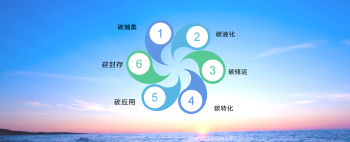免职声明:本网站为公益性网站,部分信息来自网络,如果涉及贵网站的知识产权,请及时反馈,我们承诺第一时间删除!
This website is a public welfare website, part of the information from the Internet, if it involves the intellectual property rights of your website, please timely feedback, we promise to delete the first time.
电话Tel: 19550540085: QQ号: 929496072 or 邮箱Email: Lng@vip.qq.com
摘要:中东有“世界油库”之誉。从世界石油史上看,20世纪后半期最重要的历史事件是中东石油的巨大发现。这里既是世界上石油储量最丰富的地区,也是世界石油出口量最大的地区。中东油气生产以成本低廉而著称,且因得天独厚的地理位置,出口油气方便且运输成本较低。从20世..
|
中东有“世界油库”之誉。从世界石油史上看,20世纪后半期最重要的历史事件是中东石油的巨大发现。这里既是世界上石油储量最丰富的地区,也是世界石油出口量最大的地区。中东油气生产以成本低廉而著称,且因得天独厚的地理位置,出口油气方便且运输成本较低。从20世纪60年代到今天,由于欧美政策的变化和一些新领域的开采,中东向西方国家的出口份额持续下降,出口重心逐渐向亚太地区转移。 The Middle East, an area enjoying the reputation of World Oil Depot, plays a critical role in both world economy and political arena. Nearly half of the global oil reserves are buried in this land. Meanwhile, it is the biggest exporter and supplier of crude oil. More than half of the oil consumption around the world is from this area. Multiple ports connecting Asia, Europe and Africa contributes to the low cost of oil and gas transportation, which makes it much cheaper to produce oil than other areas. Most importantly, oil discovered here owns higher quality, which becomes another advantage of this area. 油气战略(Strategies) 中东历来是能源博弈和地缘政治的焦点。这决定了其以经济发展和国际地位提升为核心的能源战略。 以石油输出国组织(OPEC)为依托的价格平衡战略: OPEC通过实施“减产提价”“限产保价”等措施影响石油市场供给和价格,力求使油价稳定在产油国和消费国均能接受的水平,以维护产油国的长期利益。 以提升国内资源价值和保障稳定出口为核心的多元化战略:中东积极推进石油产品多元化,延长油气产业链,提升产品附加值;寻求出口对外合作多元化,除保持对西欧和北美等地区的优势外,加大对中、日、印等消费大国的石油出口,并加强同亚洲油公司合作。 以确保资源控制为前提的对外开放战略:把握资源主控权,改善油气投资基础设施和政策环境,引进外国资金、技术和先进管理经验,并通过国家石油公司开展全球化经营。 Possessing a huge amount of oil and gas, the Middle East has always been the game center of large countries and focus of world geopolitics. Thus, the area aims at taking advantage of resources to push the economy forward and promote its international political status. Price, diversification and opening-up policy are three important elements of the strategy. 油气工业(Industry) 【油气资源(Resources)】 中东是当今世界上油气资源最丰富的地区。2012年,中东石油探明储量1093亿吨,占全球总量的48.4%,年产量达13.368亿吨,约占全球总量的32.5%,石油出口量占全球出口总量的一半以上。 中东主要产油国包括沙特阿拉伯、伊朗、伊拉克等。2012年,沙特阿拉伯、伊朗的原油产量分别占全球总量的13.3%、4.2%。 The Middle East possesses the richest oil and gas in the world. Its oil export shares the half of the global trade. In 2012, the reserves in this area was 109.3 billion tons, which accounts 48.4% of the global total. 【油气富集区(Pay Zones)】 中东石油大多产自一个不规则的四边形区域,四个角分别是伊拉克东北部的基尔库克、伊朗东南部波斯湾入口处的霍尔木兹岛、阿联酋南部的谢巴赫和沙特首都利雅德。 Most of oil production in the Middle East is from an irregular quadrilateral area. The four corners are Kirkuk, located in the northeast of Iraq; Hormuz, entrance to the Persian Gulf island; Shaybah, located in the southern United Arab Emirates and Riyadh, the capital of Saudi Arabia. 【油气大发现(Discovery)】 20世纪80年代,阿拉伯地区发现了一块大型的超轻质油产区,即位于沙特阿拉伯利雅德东南部的霍塔赫超轻质油油田。 20世纪90年代,中东地区有三大重要发现投入开发,分别是也门的阿里夫地堑、叙利亚的幼发拉底地堑,以及阿曼的深部盐间和盐基地层。阿曼、叙利亚和巴林的重油储量也相当丰富。 Hawtah field is located in Central Saudi Arabia. It was found in 1980’s with the reputation of producing ultra light oil. Three other significant reserves were Arif, Euphrates graben and intrasalt, which were discovered in 1990’s. 【运输条件(Transportation Facility)】 中东油气生产以成本低廉著称。已有的陆上管线和出口专用码头等基础设施相当完备。波斯湾、红海均可通行大型海轮,这使其可便捷而低成本地将油气运往亚太和欧美等地。 The cost of transporting oil and gas to the global market is relatively cheap in the Middle East, due to the various channels like Hormuz Strait and onshore pipelines. 重要技术(Critical technologies) 【EOR技术】 (EOR) 这一技术是弥补产量下降的重要手段,包括蒸汽注入法、聚合物注入法和注混相气等方法。阿曼剩余地下储量大约为500亿桶(约合68.03亿吨),但采收率只有28%,而EOR能释放巨大的产量。 【同类最佳方法】 (Best-in-class) 这一技术源自挪威,即识别出那些储层条件可能不太有利,但作业环境相对便宜的油藏,然后进行开发,有效帮助了阿联酋提升其采收率。 【现代三维地震技术】 (3-D seismic technology) 这一技术是揭开伊朗位于扎格罗斯山脉地区重大油田面纱的关键。虽然相比已有储层,这一地区的新发现可能较小,但对产量与储量仍有巨大的贡献。如在帕里斯(Paris)和卡兰吉(Karanj)油田附近一个已经圈定的构造当中,通过三维地震技术找到了约200亿桶(约合27.21亿吨)地下储量。在里海南部的深水区域,约有140亿桶(约合19.05亿吨)潜在储量。 【水平井】 (Horizontal well technology) 这是中东产油国如沙特阿拉伯提高产量的重要技术。尽管昂贵(利用水平井开采石油的成本比垂直井高出了50%),但是采用这一技术创造的价值更高。 沙特阿美公司在采用水平井技术后,产量增加了100%。 主要资源国 (Major resource countries) 【沙特阿拉伯(Saudi Arabia)】 沙特阿拉伯拥有石油探明储量365亿吨。最大的油田是盖瓦尔油田,开采量占油田探明储量的48%。全国有7座炼油厂,所产原油的2/3经布盖格加工厂出口。 Proven oil reserves of Saudi Arabia equaled to 36.5 billion tons in 2012. There are nearly 100 oil fields, and 7 refineries in this country. 【伊朗(Iran)】 伊朗拥有石油探明储量216亿吨,大部分位于胡齐斯坦省西南部,阿扎德甘油田、阿哈—压力油田是主力油田。全国大部分石油通过哈尔克岛出口,另一大门户是拉万岛。伊朗共有9座炼油厂。 Proven oil reserves of Iran equaled to 21.6 billion tons in 2012. Most of the resources are found in southwest of Khuzestan Province near Iraq. 【伊拉克(Iraq)】 伊拉克拥有石油探明储量202亿吨,主要分布在东南部地区。在其西部和南部沙漠,仍有发现新油藏的潜力。霍尔木兹海峡是伊拉克主要的原油出口通道,经这里出口的原油占其出口总量的80%。 Proven oil reserves of Iraq equaled to 20.2 billion tons in 2012, mainly discovered in southeast. Hormuz Strait is the main oil export gate, through which about 80% of the total were shipped. 【科威特(Kuwait)】 科威特拥有探明石油储量140亿吨,其最大的产油区是大布尔甘地区。艾哈迈迪港、阿卜杜拉港和舒艾拜既是出口原油的主要港口,又是炼油中心。石油工业是科威特国内最大产业,占GDP总量近一半。 Proven oil reserves of Kuwait equaled to 14 billion tons in 2012. The petroleum industry is the largest in the country, accounting nearly half of the country's GDP. |












